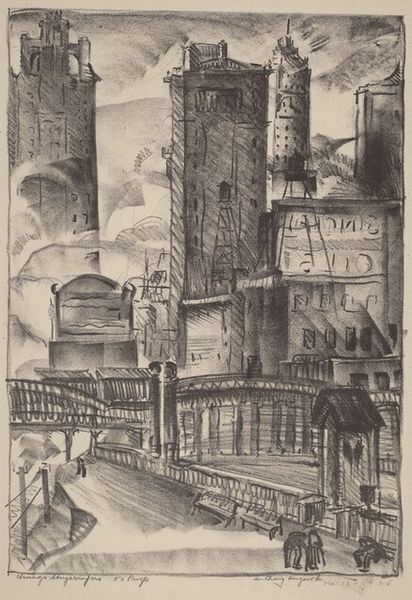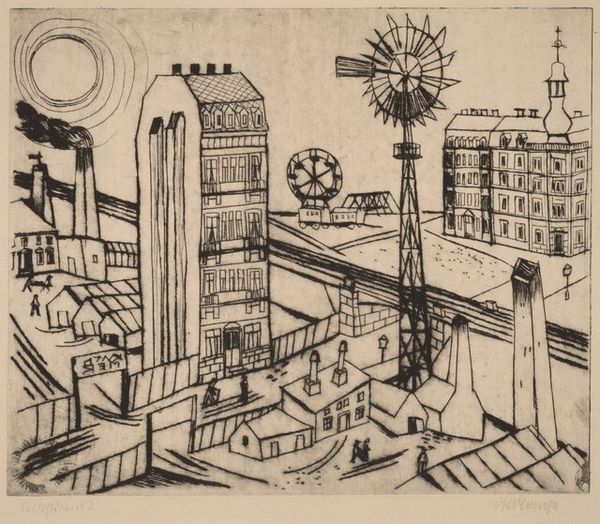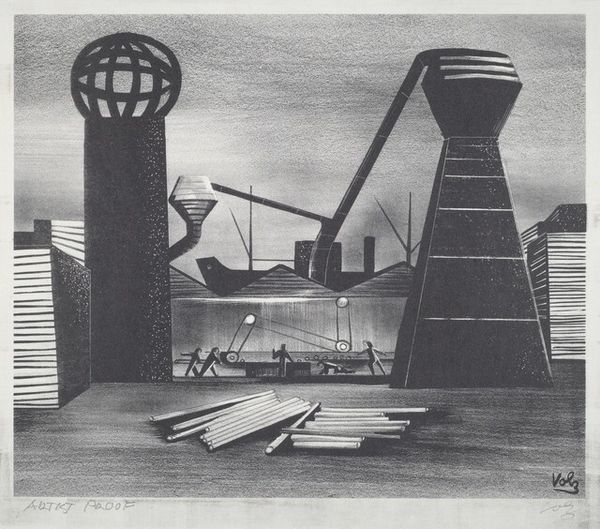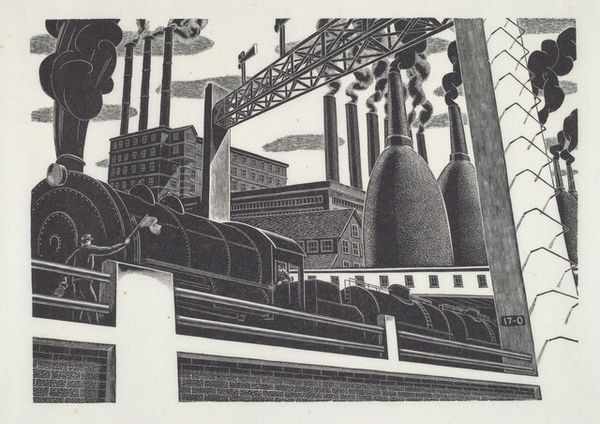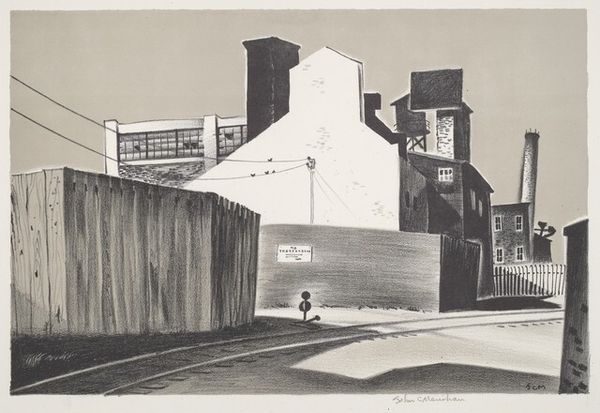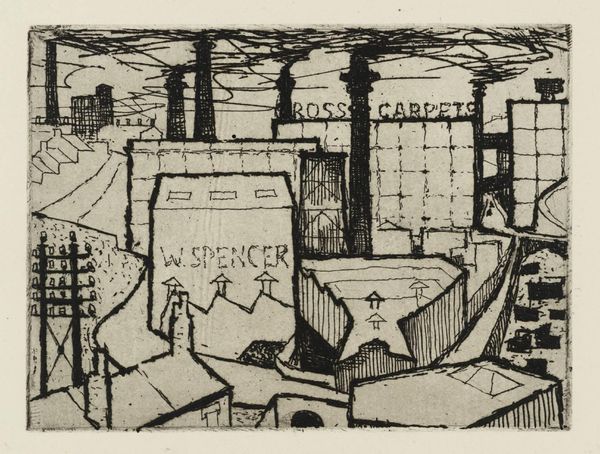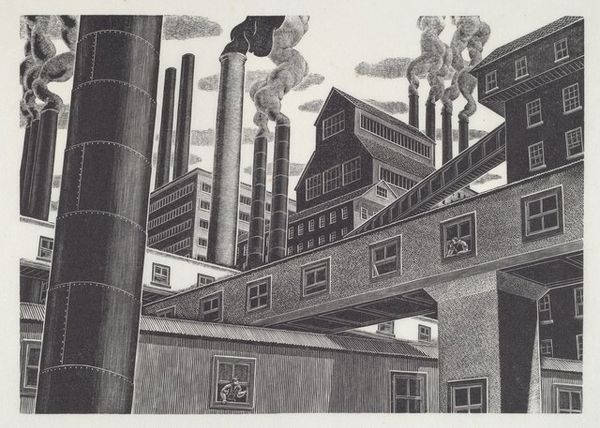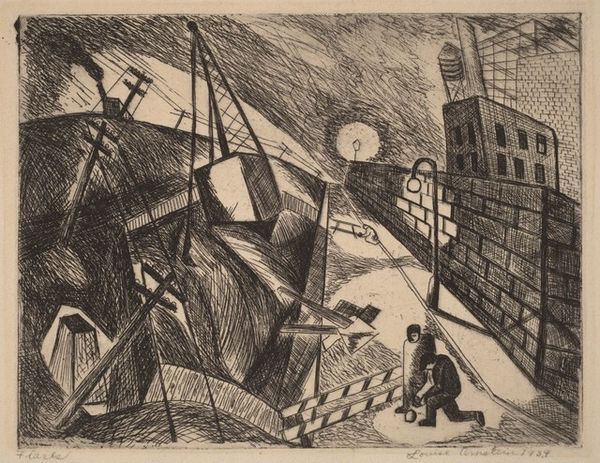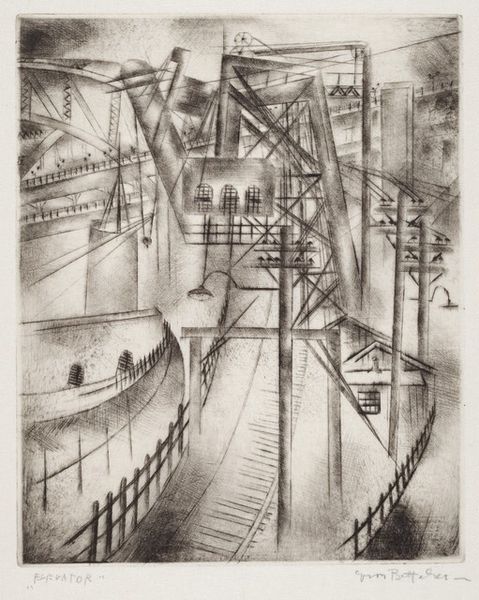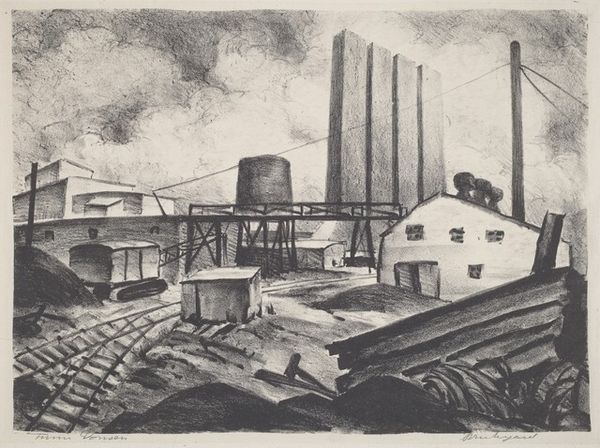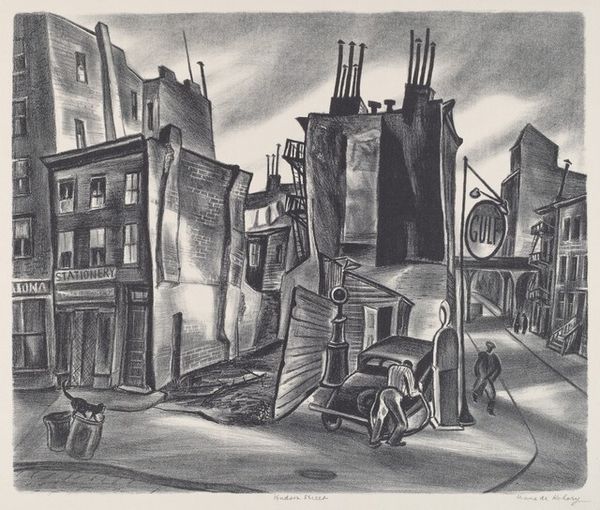
drawing, print, pencil, graphite
#
drawing
# print
#
pencil drawing
#
pencil
#
graphite
#
cityscape
Dimensions: image: 254 x 356 mm paper: 318 x 457 mm
Copyright: National Gallery of Art: CC0 1.0
Curator: Anthony Velonis's "Waterfront Whimsy," a graphite drawing created around 1936, offers a unique perspective on an urban scene. Editor: The first thing that strikes me is how off-kilter everything seems. The buildings tilt, the perspective is skewed... It feels almost dreamlike, or perhaps a touch unsettling. Curator: I think that distortion speaks to a broader concern about representation, particularly within urban environments of the time. Consider the context; the Depression was ongoing, affecting people's perceptions of stability and progress. Is Velonis reflecting social unease here? Editor: Absolutely. I mean, we see these diminutive figures trekking up what looks like a precarious walkway into the towering cityscape. It's almost like they're struggling against the weight and ambition of the modern metropolis itself. But why present the landscape in that disjointed style? Curator: Perhaps the piece presents an individual’s response to urbanisation as an uneven project? With progress having varied impacts, and the very fabric of cities undergoing monumental transformation. Also, there's an intentional choice of medium—graphite. Editor: Graphite allows for subtlety and depth, doesn’t it? The muted tones emphasize that somber, uncertain atmosphere that defines the time, but how do institutions like ours perpetuate these values through display choices? Curator: These questions must constantly inform the exhibit, so that “Waterfront Whimsy” isn’t only about Velonis, or New York of the 1930s, but what that visual story still provokes for us here and now. Editor: A poignant commentary on how urban landscapes continue to be arenas of hope and uncertainty, captured beautifully through this tilted reality. Thank you.
Comments
No comments
Be the first to comment and join the conversation on the ultimate creative platform.
